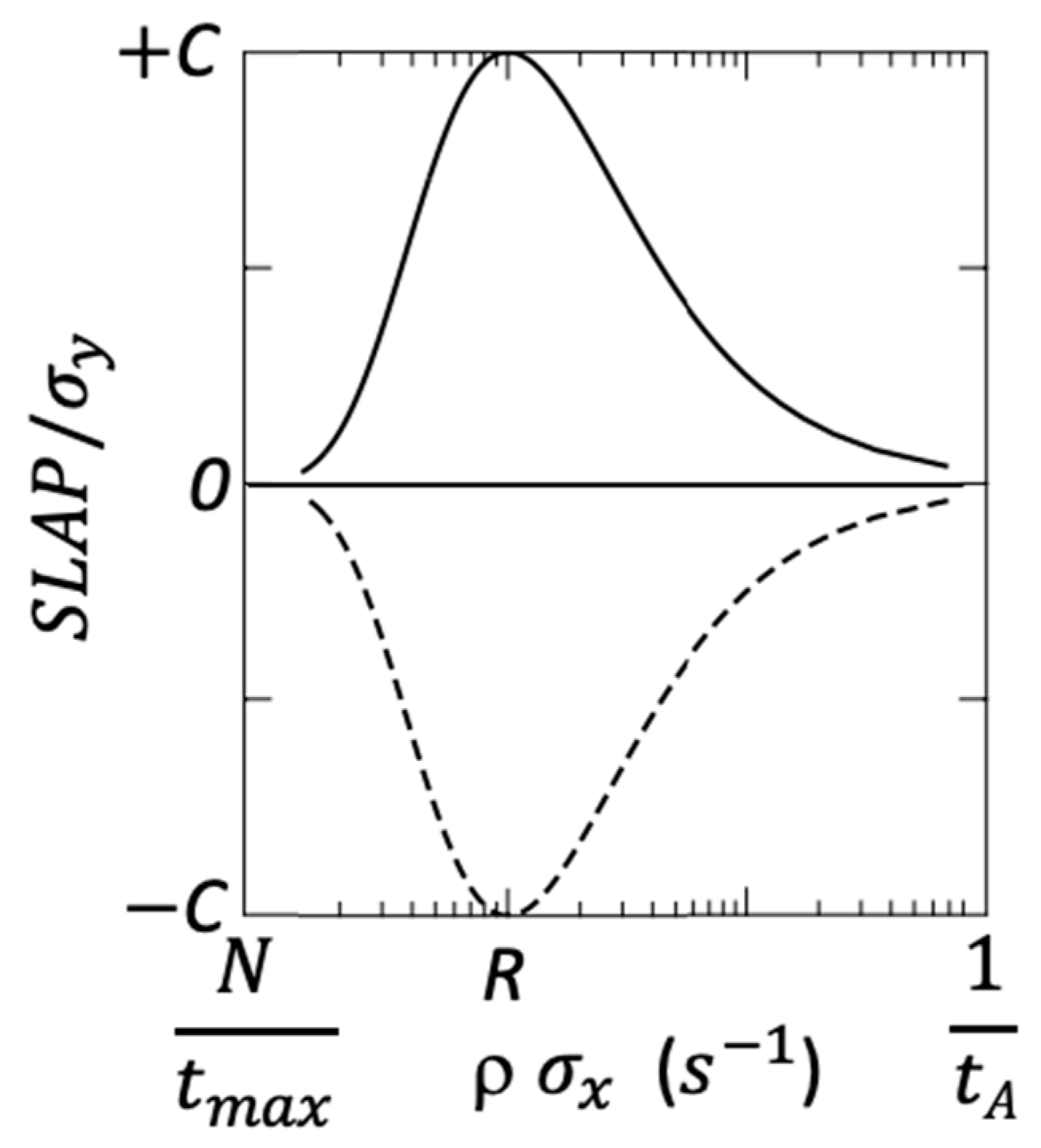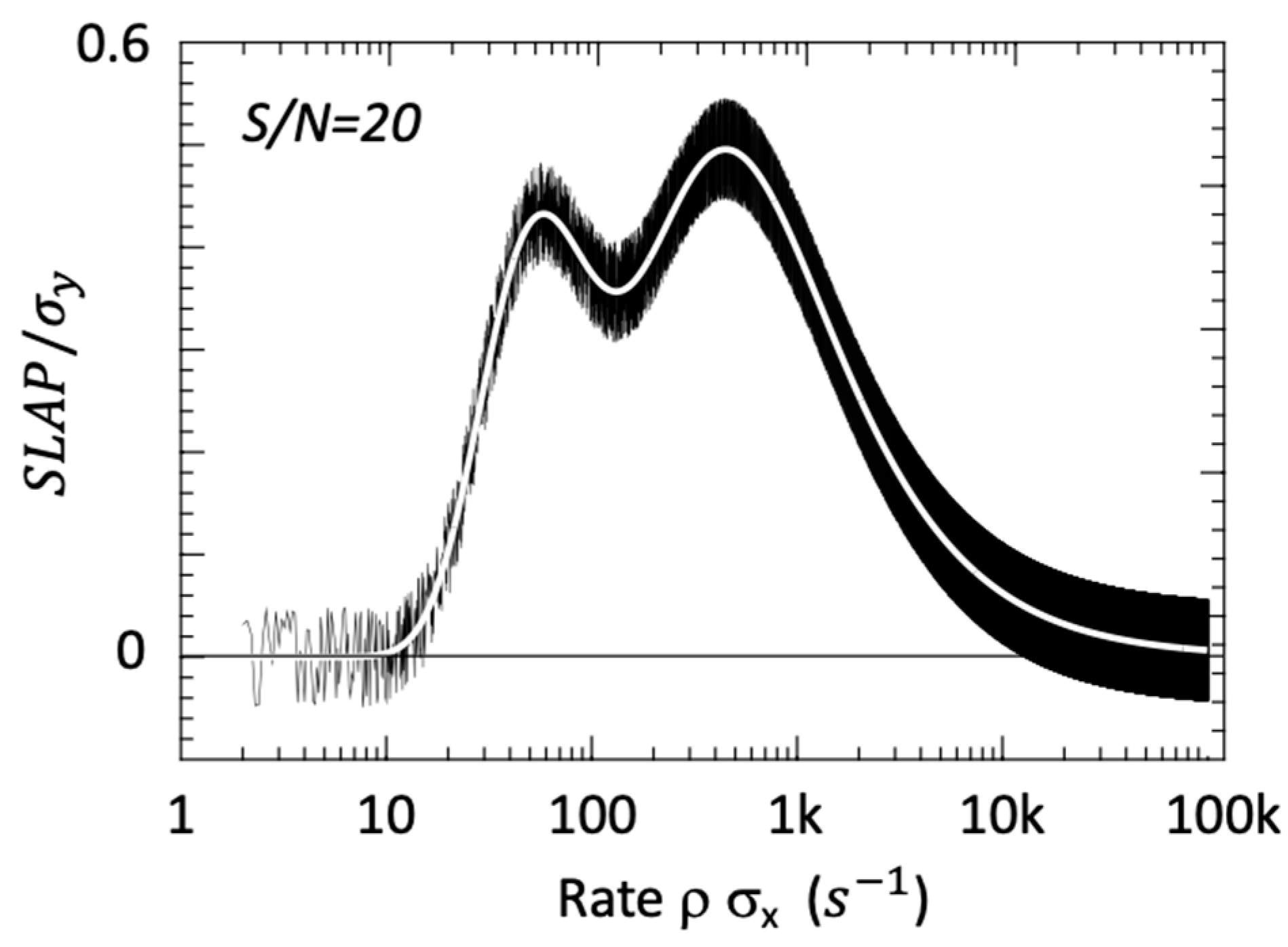The Sliding-Aperture Transform and Its Applicability to Deep-Level Transient Spectroscopy
Abstract
:Featured Application
Abstract
1. Introduction
2. Methods
3. Results
4. Discussion
Author Contributions
Funding
Institutional Review Board Statement
Data Availability Statement
Acknowledgments
Conflicts of Interest
References
- Lang, D. Deep-level transient spectroscopy: A new method to characterize traps in semiconductors. J. Appl. Phys. 1974, 45, 3023. [Google Scholar] [CrossRef]
- Hanak, T.R.; Ahrenkiel, R.K.; Dunlavy, D.J.; Bakry, A.M.; Timmons, M.L. A new method to analyze multiexponential transients for deep-level transient spectroscopy. J. Appl. Phys. 1989, 67, 4126. [Google Scholar] [CrossRef]
- Ikossi-Anastasiou, K. Refinements in the method of moments for analysis of multiexponential capacitance transients in deep-level transient spectroscopy. J. Appl. Phys. 1987, 61, 182. [Google Scholar] [CrossRef]
- Ransom, C.M.; Chappell, T.I.; Freeouf, J.L.; Kirchner, P.D. Modulating functions waveform analysis of multiexponential transients for deep-level transient spectroscopy. Mater. Res. Soc. Symp. Proc. 1986, 69, 337. [Google Scholar] [CrossRef]
- Kirchner, P.D.; Schaff, W.J.; Maracas, G.N.; Eastman, L.F.; Chappell, T.I.; Ransom, C.M. The analysis of exponential and nonexponential transients in deep-level transient spectroscopy. J. Appl. Phys. 1981, 52, 6462. [Google Scholar] [CrossRef]
- Dobaczewski, L.; Peaker, A.R.; Nielsen, K.B. Laplace-transform deep-level spectroscopy: The technique and its applications to the study of point defects in semiconductors. J. Appl. Phys. 2004, 96, 4689. [Google Scholar] [CrossRef] [Green Version]
- Ikeda, K.; Takaoka, H. Deep level Fourier Spectroscopy for Determination of Deep Level Parameters. Jpn. J. Appl. Phys. 1982, 21, 462. [Google Scholar] [CrossRef]
- Farzana, E.; Chaiken, M.F.; Blue, T.E.; Arehart, A.R.; Ringel, S.A. Impact of deep level defects induced by high energy neutron radiation in β-Ga2O3. APL Mater. 2019, 7, 022502. [Google Scholar] [CrossRef] [Green Version]
- Kim, J.; Pearton, S.; Fares, C.; Yang, J.; Ren, F.; Kim, S.; Polyakov, A. Radiation Damage Effects in Ga2O3 Materials and Devices. J. Mater. Chem. C 2019, 7, 10. [Google Scholar] [CrossRef]
- Kumar, A.; Dhillon, J.; Verma, S.; Kumar, P.; Asokan, K.; Kanjilal, D. Identification of swift heavy ion induced defects in Pt/n-GaN Schottky diodes by in-situ deep level transient spectroscopy. Semicond. Sci. Technol. 2018, 33, 085008. [Google Scholar] [CrossRef]
- Li, Z. Radiation damage effects in Si materials and detectors and rad-hard Si detectors for SLHC. JINST 2009, 4, P03011. [Google Scholar] [CrossRef]
- Summers, G.P.; Burke, E.A.; Walters, R.J. Damage correlations in semiconductors exposed to gamma, electron and proton radiation. IEEE Trans. Nucl. Sci. 1993, 40, 1372–1379. [Google Scholar] [CrossRef] [Green Version]
- Morath, C.P.; Cowan, V.M.; Treider, L.A.; Jenkins, G.D.; Hubbs, J.E. Proton Irradiation Effects on the Performance ofIII-V-Based, Unipolar Barrier Infrared Detectors. IEEE Trans. Nucl. Sci. 2015, 62, 512–519. [Google Scholar] [CrossRef]
- Lee, J.; Kim, H.; Jeong, H.; Cho, S. Optimization of shielding to reduce cosmic radiation damage to packaged semiconductors during air transport using Monte Carlo simulation. Nucl. Eng. Technol. 2020, 52, 1817. [Google Scholar] [CrossRef]
- Oda, T.; Arai, T.; Furukawa, T.; Shiraishi, M.; Sasajima, Y. Electric-Field-Dependence Mechanism for Cosmic Ray Failure in Power Semiconductor Devices. IEEE Trans. Electron Dev. 2021, 68, 3505–3512. [Google Scholar] [CrossRef]
- Wesch, W.; Wendler, E.; Schnohr, C.S. Damage evolution and amorphization in semiconductors under ion irradiation. Nucl. Inst. Meth. Phys. Res. B 2012, 277, 58. [Google Scholar] [CrossRef]
- Zeller, H. Cosmic ray induced failures in high power semiconductor devices. Solid State Electron. 1995, 38, 2041. [Google Scholar] [CrossRef]
- Wickramaratne, D.; Dreyer, C.E.; Monserrat, B.; Shen, J.-X.; Lyons, J.L.; Alkauskas, A.; van de Walle, C.G. Defect identification based on first-principles calculations for deep level transient spectroscopy. Appl. Phys. Lett. 2018, 113, 192106. [Google Scholar] [CrossRef] [Green Version]
- Criado, J.; Gomez, A.; Calleja, E.; Munoz, E. Novel method to determine capture cross-section activation energies by deep-level transient spectroscopy techniques. Appl. Phys. Lett. 1988, 52, 660. [Google Scholar] [CrossRef]
- Balland, J.C.; Zielinger, J.P.; Noguet, C.; Tapiero, M. Investigation of deep levels in high-resistivity bulk materials by photo-induced current transient spectroscopy. I. Review and analysis of some basic problems. J. Phys. D Appl. Phys. 1986, 19, 57. [Google Scholar] [CrossRef]
- Blood, P.; Orton, J.W. The electrical characterization of semiconductors. Rep. Prog. Phys. 1978, 41, 157. [Google Scholar] [CrossRef]
- Cui, Y.; Bhattacharya, P.; Burger, A.; Johnstone, D. Photo-induced current transient spectroscopy and photoluminescence studies of defects in AgGa0.6In0.4Se2. J. Phys. D Appl. Phys. 2013, 46, 305103. [Google Scholar] [CrossRef]
- Emiroglu, D.; Evans-Freeman, J.; Kappers, M.J.; McAleese, C.; Humphreys, C.J. High Resolution Laplace Deep Level Transient Spectroscopy Studies of Shallow and Deep Levels in n-GaN. In Proceedings of the IEEE 2008 Conference on Optoelectronic and Microelectronic Materials and Devices, Sydney, NSW, Australia, 28 July–1 August 2008. [Google Scholar]
- Buchwald, W.R.; Morath, C.P.; Drevinsky, P.J. Effects of deep defect concentration on junction space charge capacitance measurements. J. Appl. Phys. 2007, 101, 094503. [Google Scholar] [CrossRef]
- Buchwald, W.R.; Johnson, N.M.; Trombetta, L.P. New metastable defects in GaAs. Appl. Phys. Lett. 1987, 50, 1007. [Google Scholar] [CrossRef]
- Arora, B.M.; Chakravarty, S.; Subramanian, S.; Polyakov, V.I.; Ermakov, M.G.; Ermakova, O.N.; Perov, P.I. Deep-level transient charge spectroscopy of Sn donors in AlxGa1−xAs. J. Appl. Phys. 1991, 73, 1802. [Google Scholar] [CrossRef]
- Peale, R.E.; Fredricksen, C.J.; Barrett, C.L.; Otero, A.G.; Jack, A.R.; Gonzalez, F.J.; Sapkota, D.; Dove, A.R.; Metzger, P.T. Laser Particle Sizer for Plume-Induced Ejecta Clouds. In Laser Radar Technology and Applications XXVII, Proceedings of the PIE Conference on Defense + Commercial Sensing, Orlando, FL, USA, 3–8 April 2022; Kamerman, G.W., Magruder, L.A., Turner, M.D., Eds.; SPIE: Bellingham, WA, USA, 2022; Volume 12110, Paper # 2. [Google Scholar]




Publisher’s Note: MDPI stays neutral with regard to jurisdictional claims in published maps and institutional affiliations. |
© 2022 by the authors. Licensee MDPI, Basel, Switzerland. This article is an open access article distributed under the terms and conditions of the Creative Commons Attribution (CC BY) license (https://creativecommons.org/licenses/by/4.0/).
Share and Cite
Buchwald, W.R.; Peale, R.E.; Grant, P.C.; Logan, J.V.; Webster, P.T.; Morath, C.P. The Sliding-Aperture Transform and Its Applicability to Deep-Level Transient Spectroscopy. Appl. Sci. 2022, 12, 5317. https://doi.org/10.3390/app12115317
Buchwald WR, Peale RE, Grant PC, Logan JV, Webster PT, Morath CP. The Sliding-Aperture Transform and Its Applicability to Deep-Level Transient Spectroscopy. Applied Sciences. 2022; 12(11):5317. https://doi.org/10.3390/app12115317
Chicago/Turabian StyleBuchwald, Walter R., Robert E. Peale, Perry C. Grant, Julie V. Logan, Preston T. Webster, and Christian P. Morath. 2022. "The Sliding-Aperture Transform and Its Applicability to Deep-Level Transient Spectroscopy" Applied Sciences 12, no. 11: 5317. https://doi.org/10.3390/app12115317





